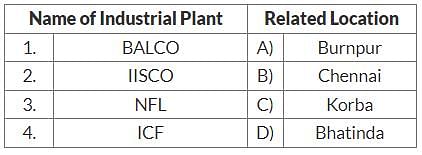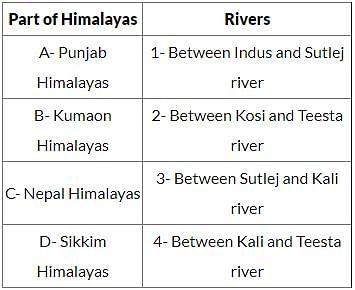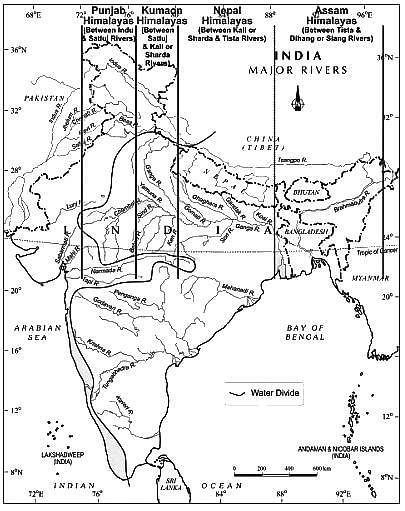UPPSC Prelims (GS I) Mock Test - 5 - UPPSC (UP) MCQ
30 Questions MCQ Test - UPPSC Prelims (GS I) Mock Test - 5
With reference to the cultural history of India, which one of the following is the correct description of the term 'paramitas' ?
The Sustainable Development Goals (SDGs): Agenda
- Goal 13: Life on land
- Goal 14: Climate action
- Goal 15: Life below water
Which of the pairs given above are incorrectly matched?
| 1 Crore+ students have signed up on EduRev. Have you? Download the App |
Uttar Pradesh to get its second Elephant Reserve, it would be a part of?
Who secured her first women's singles title at the India Open, defeating Chen Yu Fei in a dominant straight-game victory?
The main reason for the peasants to join the 1857 Revolt was:
The warm and dry winds that blow down the steep valleys in Japan are called:
Which one of the following is the richest source of protein?
Mark out the correct sequence of perspectives on gender and development in India.
The Genetic Engineering Appraisal Committee is constituted under the
Which of the following statement is not correct regarding Butler Committee?
Economic Advisory Council to Prime Minister, EAC-PM has released the Competitiveness Roadmap for India@100 in New Delhi. The roadmap will guide the way for India to become a higher-income country by which year?
Sendai framework, Yokohoma Strategy and Hyogo framework are related to which of the following?
Which state/UT has banned the use of mobile phones in classrooms?
Which of the following Articles of the Indian Constitution are related to citizenship?
Which Vijaynagar ruler took the title of Yavanaraja Sthapnachrya?
With the reference to Saadat Khan consider the following statement.
1. He tried to increase Mughal influence in the Awadh region by reducing the number of Jagidars appointed by Mughals.
2. He started Ijarah System in his province.
Which of the following statements is/are incorrect?
In India, the child sex ratio is defined as the number of females per thousand males in the age group _______.
Consider the following statements pertaining to the Satavahanas:
1. Satavahana rulers were identified through matronymics.
2. Satavahana succession to the throne was generally patrilineal.
Which of the statements given above is/are correct?
What is the designated inflation time for evacuation slides according to regulations?
Under the Regional Connectivity Scheme (RCS), what is the maximum fare cap for 50% of the total seats?
Which state led the addition of transmission lines in FY2024 according to the Central Electricity Authority?
Which of the following is NOT mentioned as a recommendation to improve air quality in the Sundarbans?
Who founded the philosophy of Shuddha Advaita, and what does it emphasize?




















